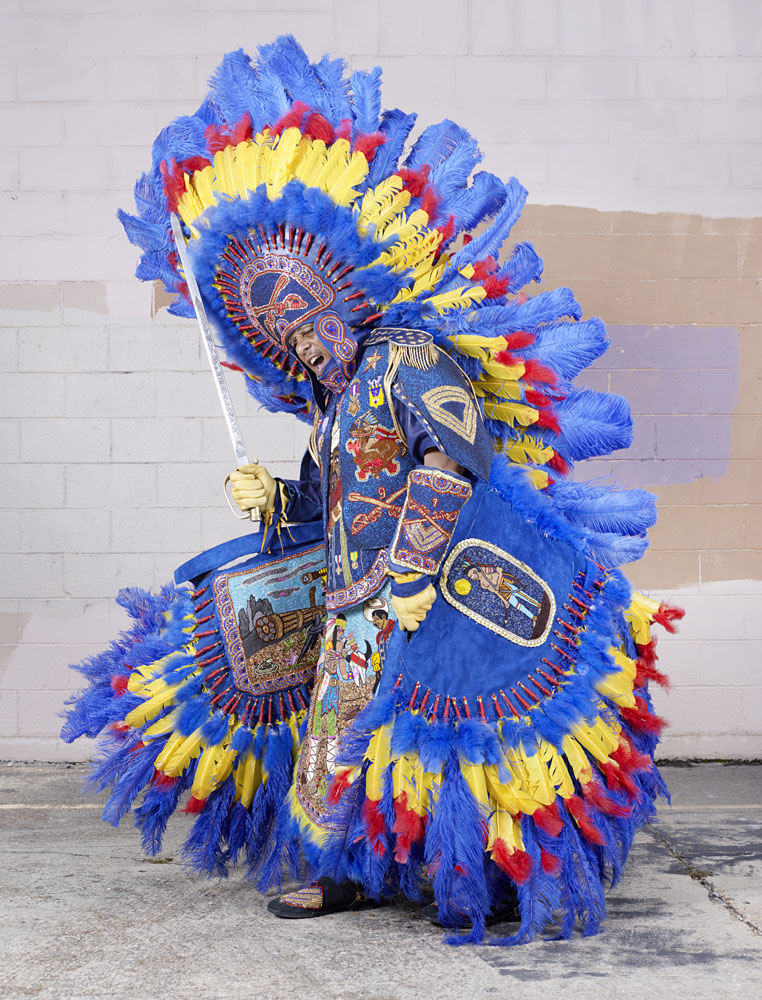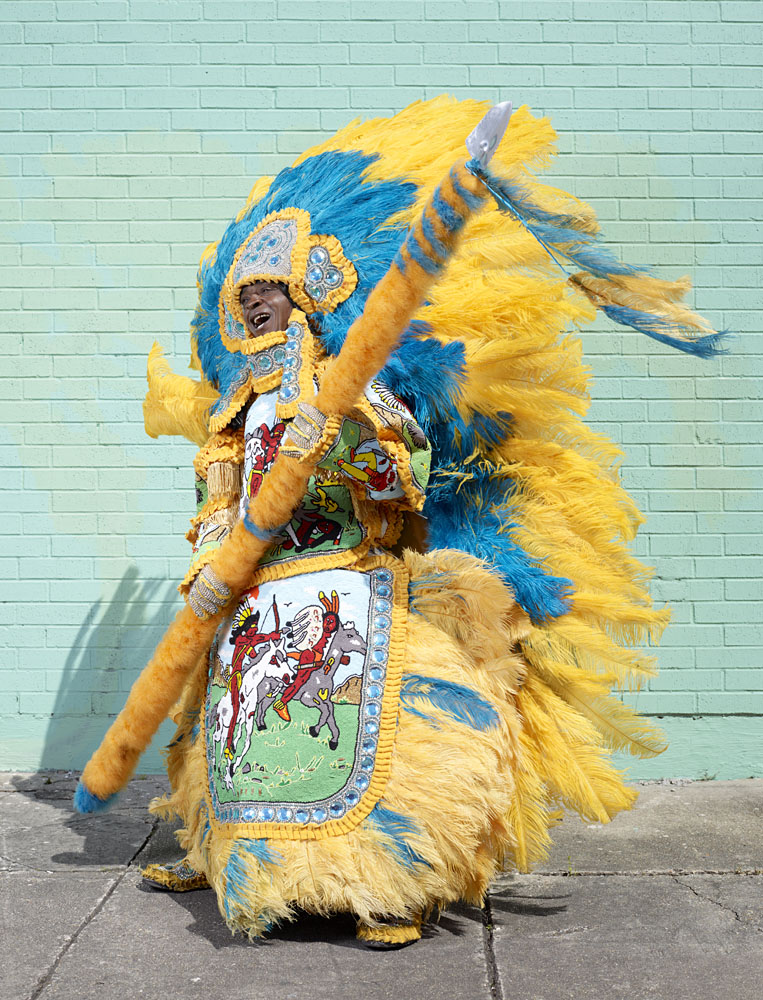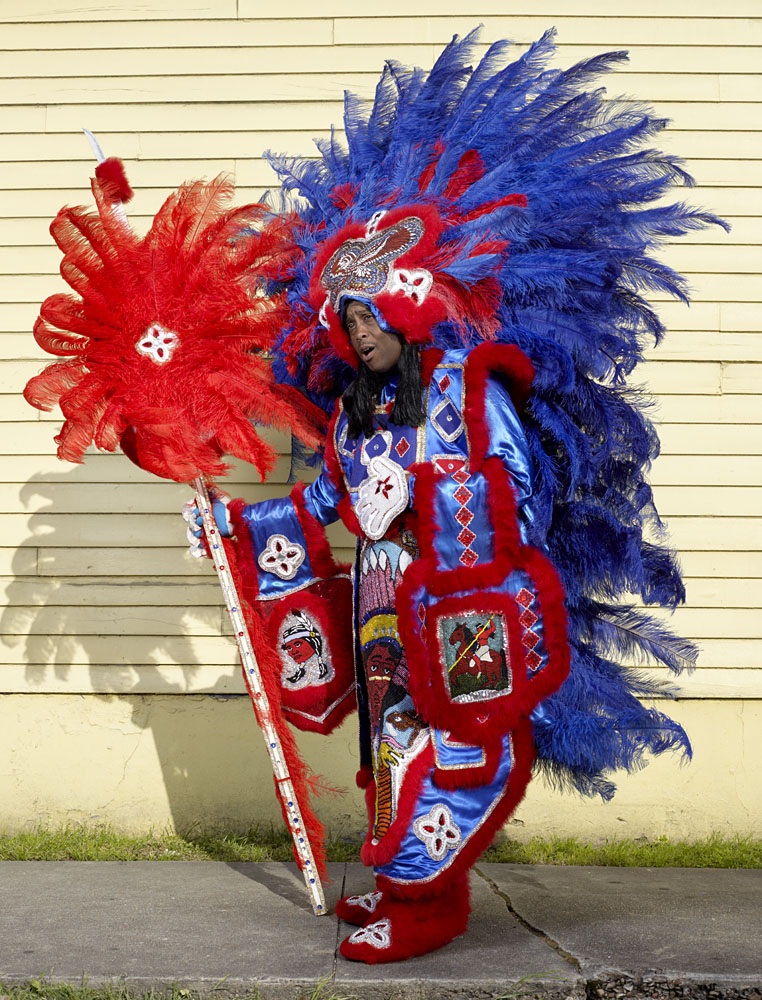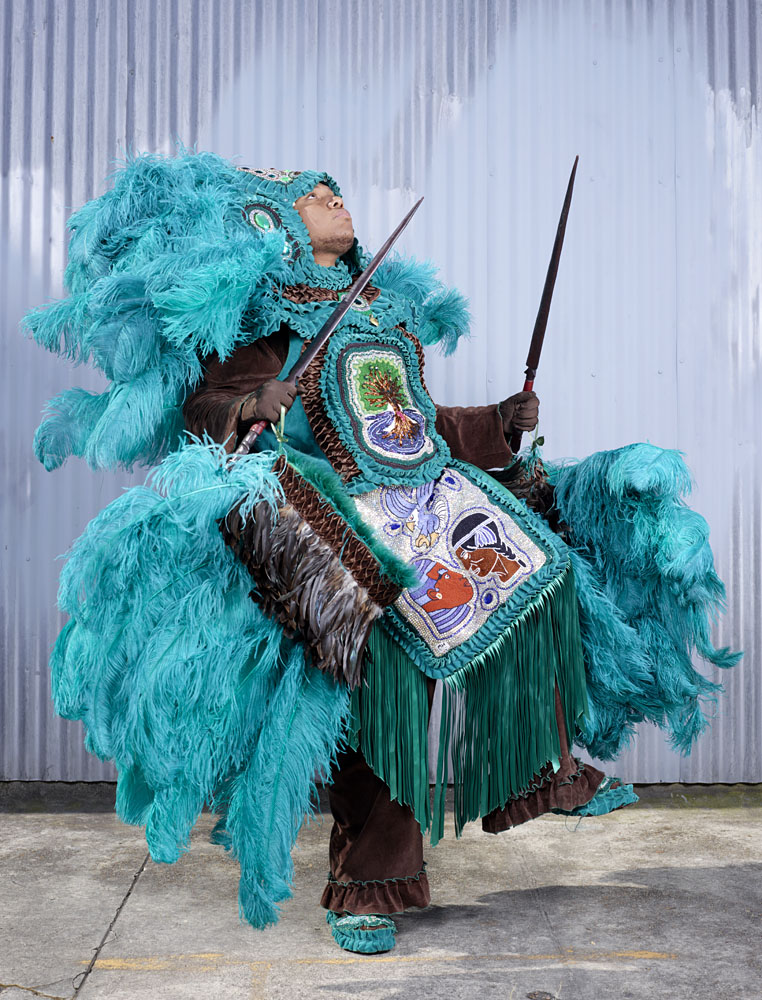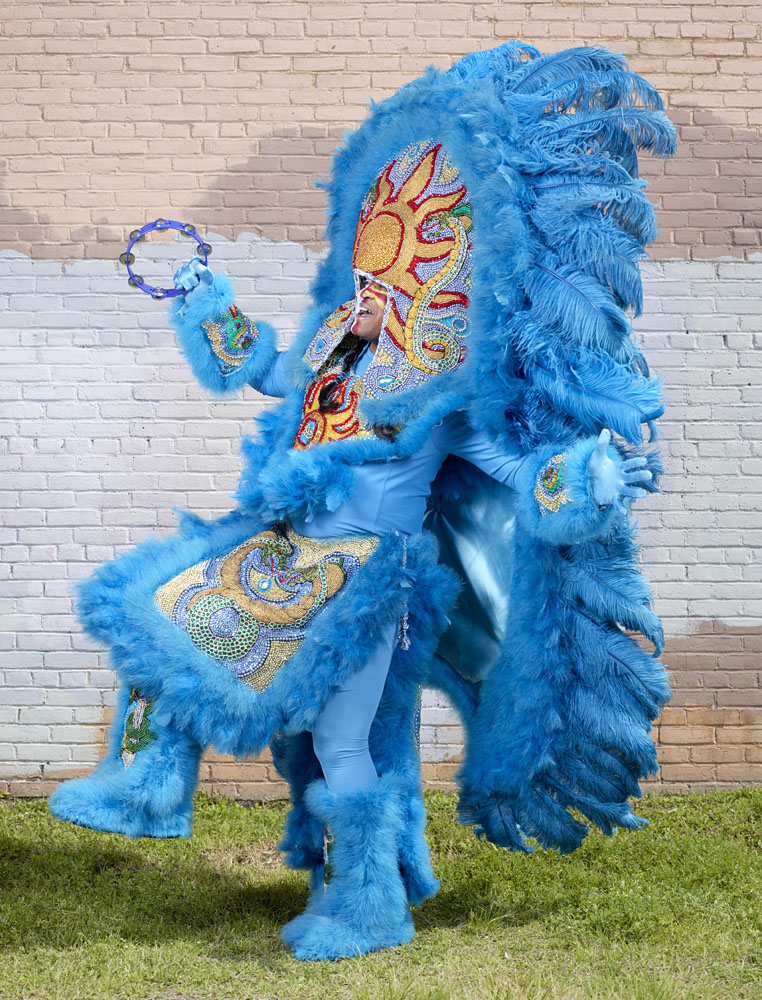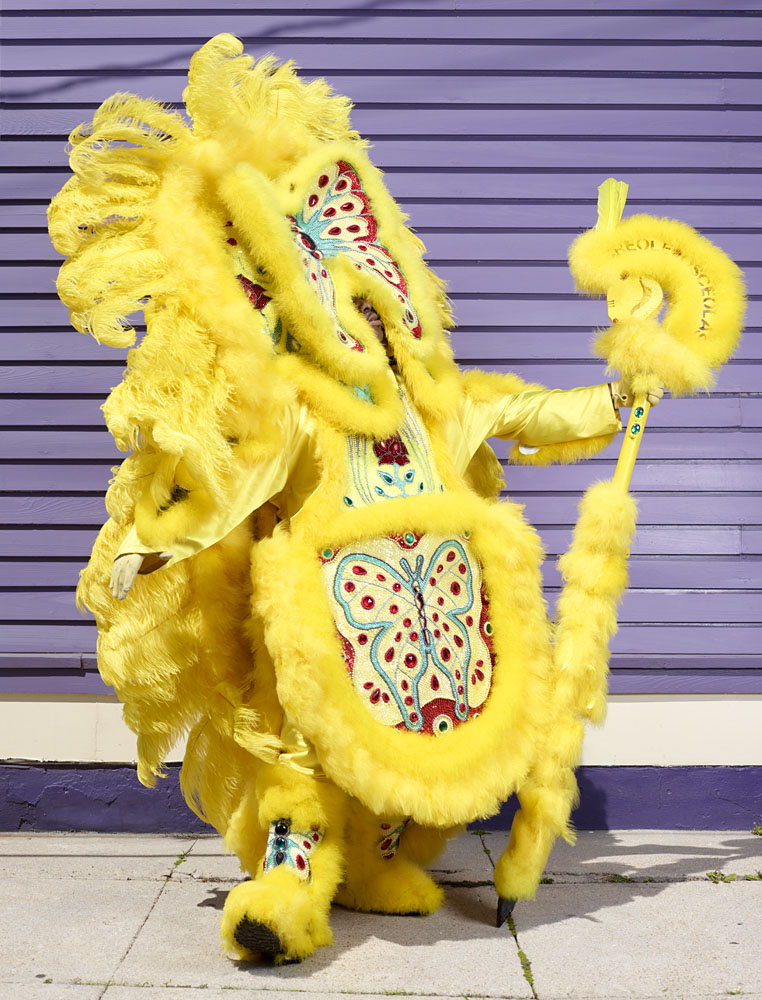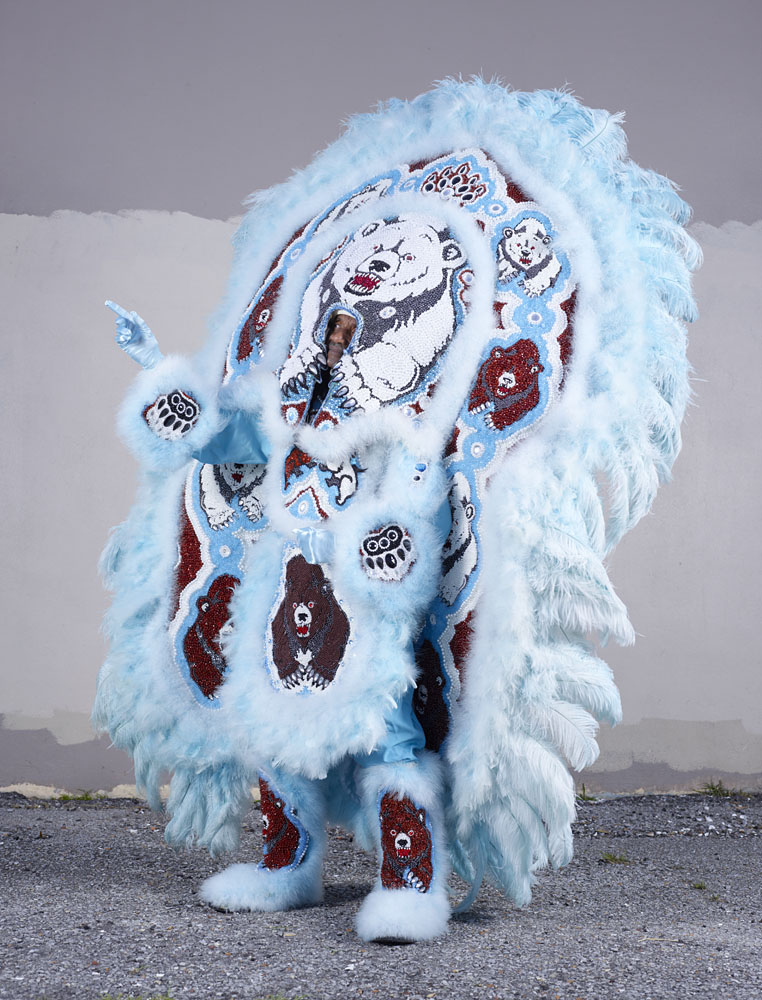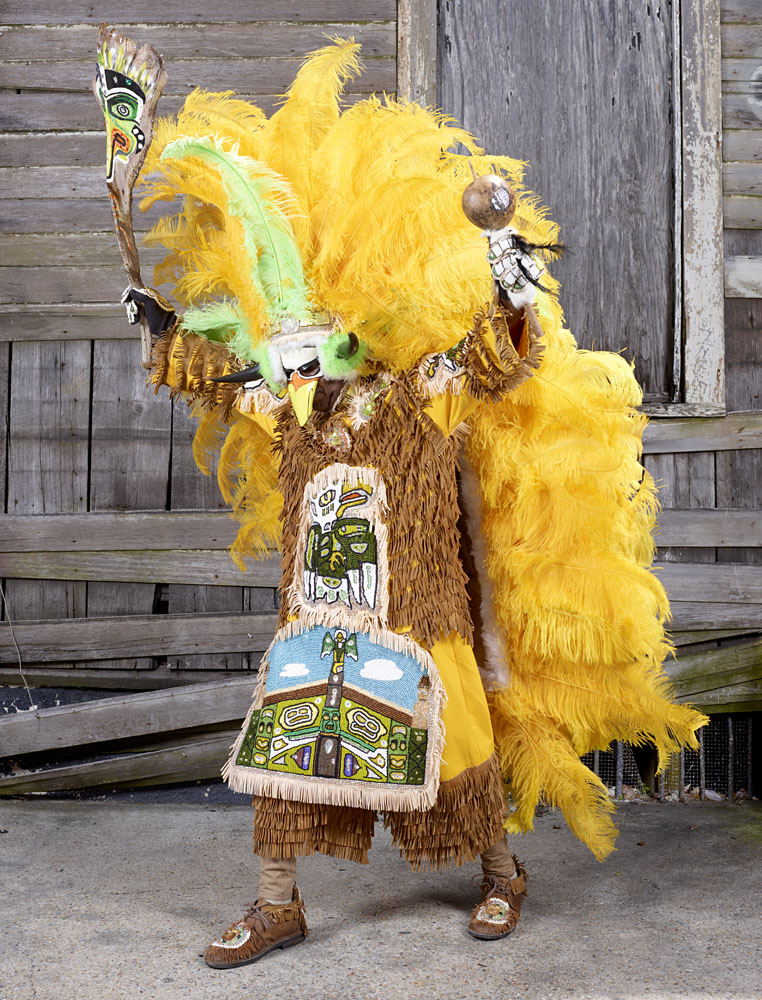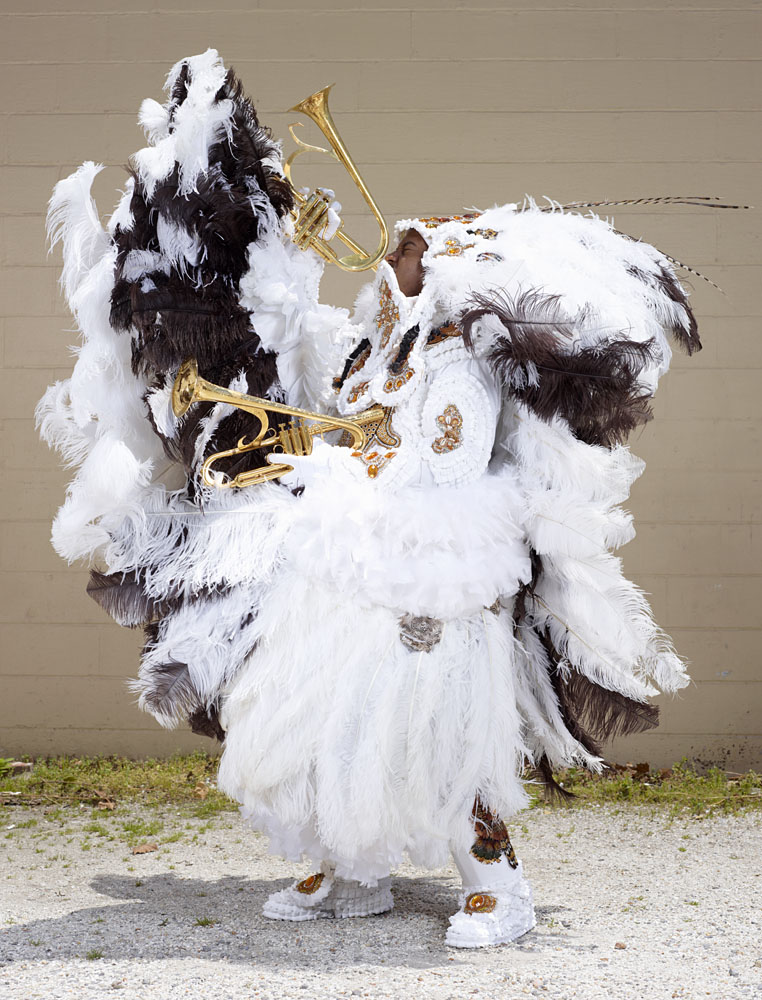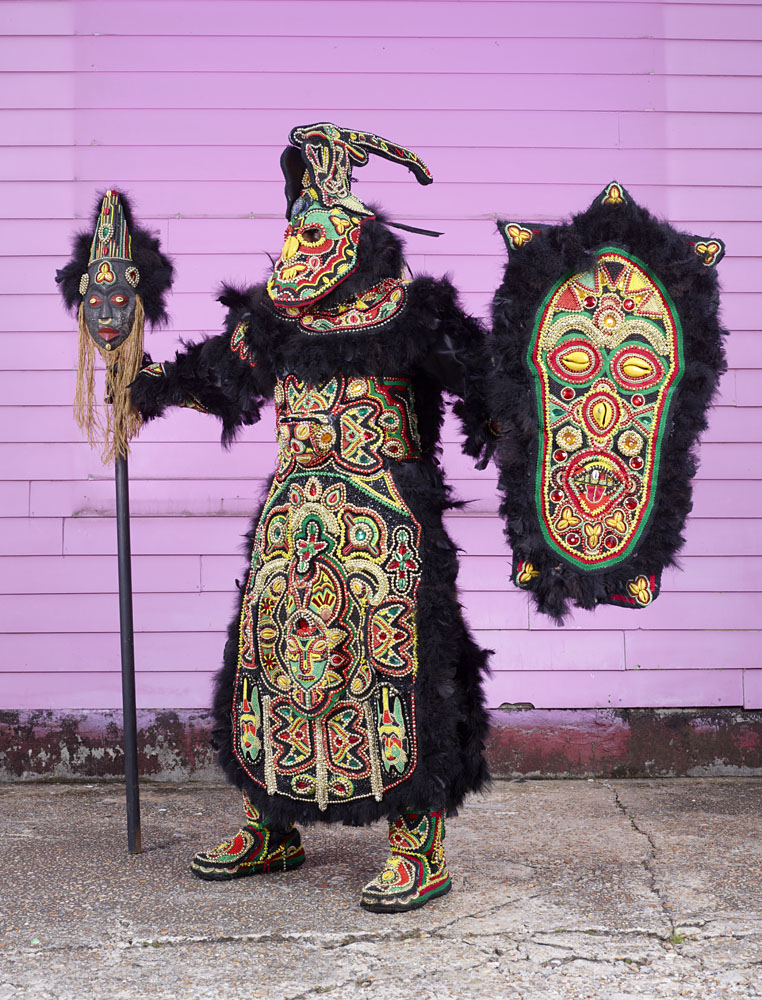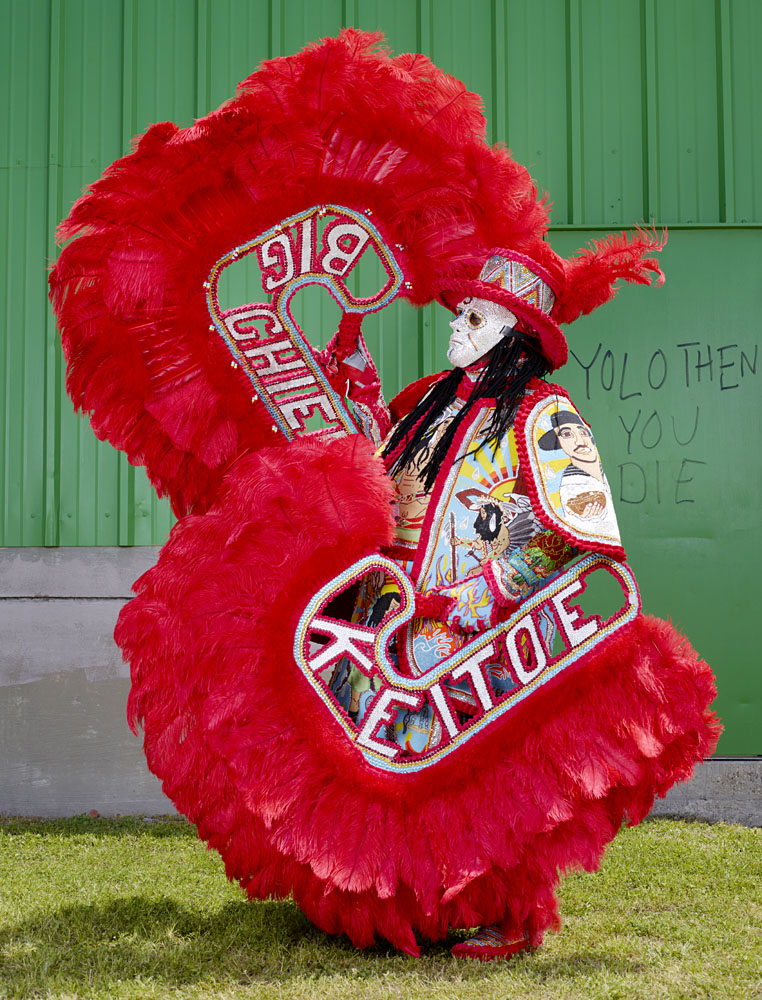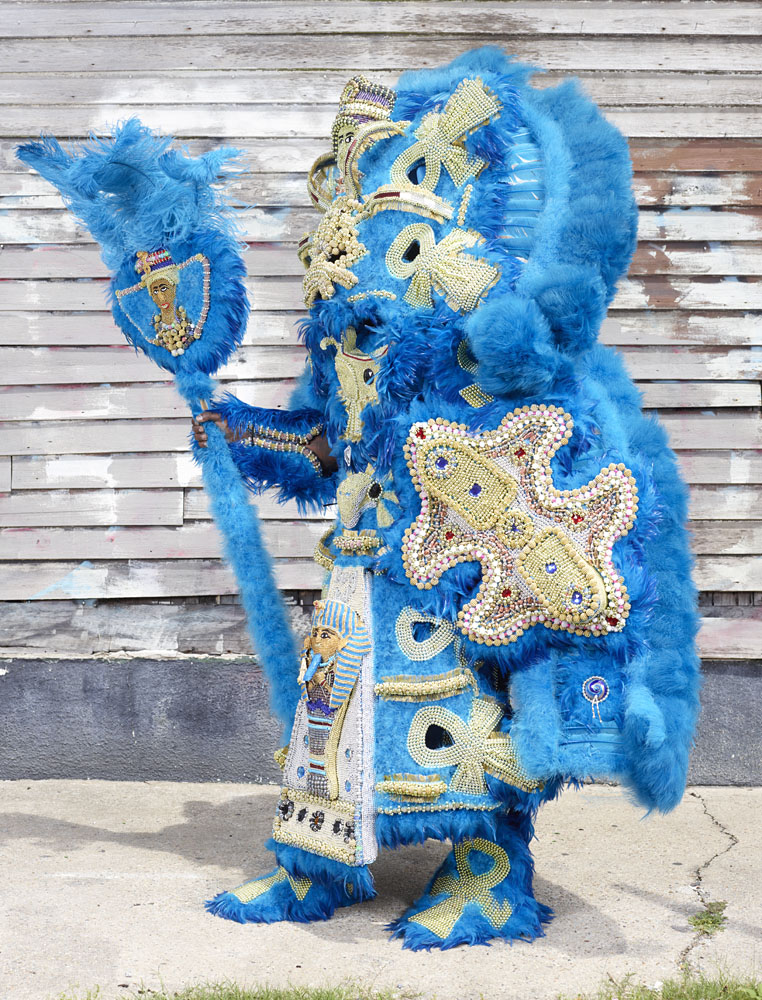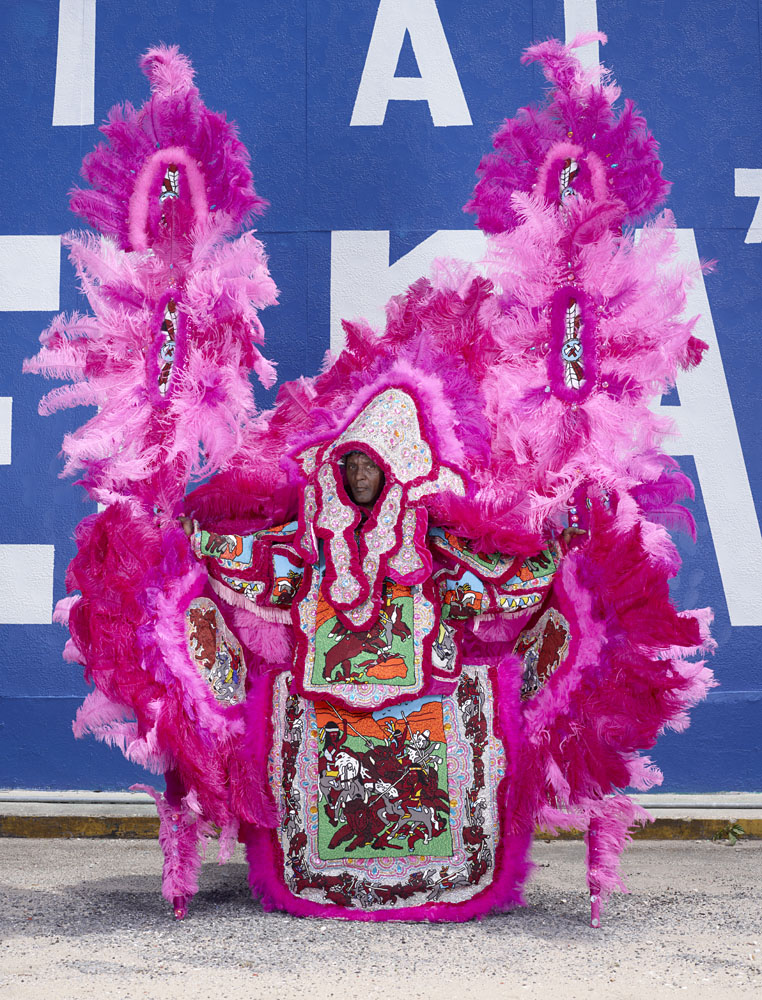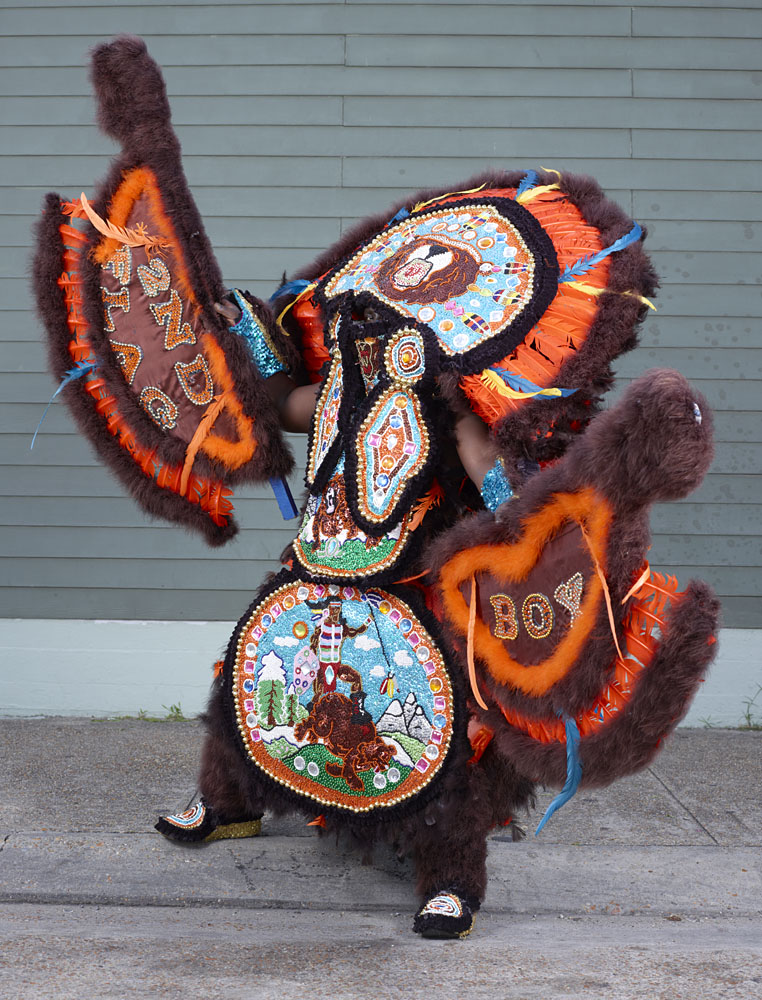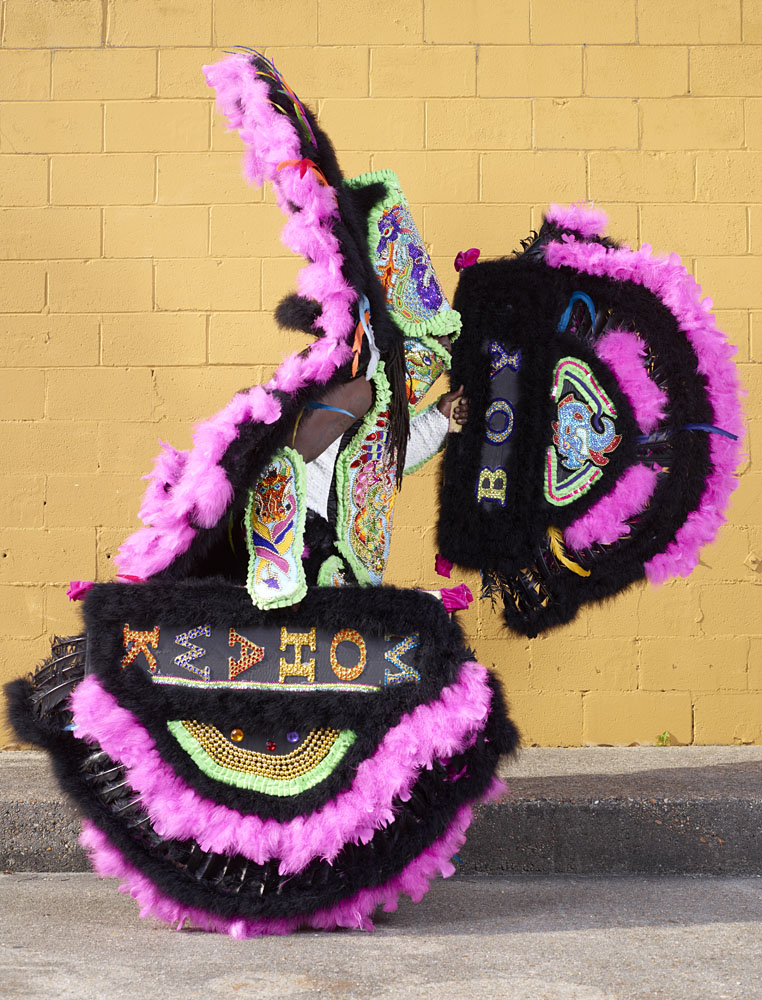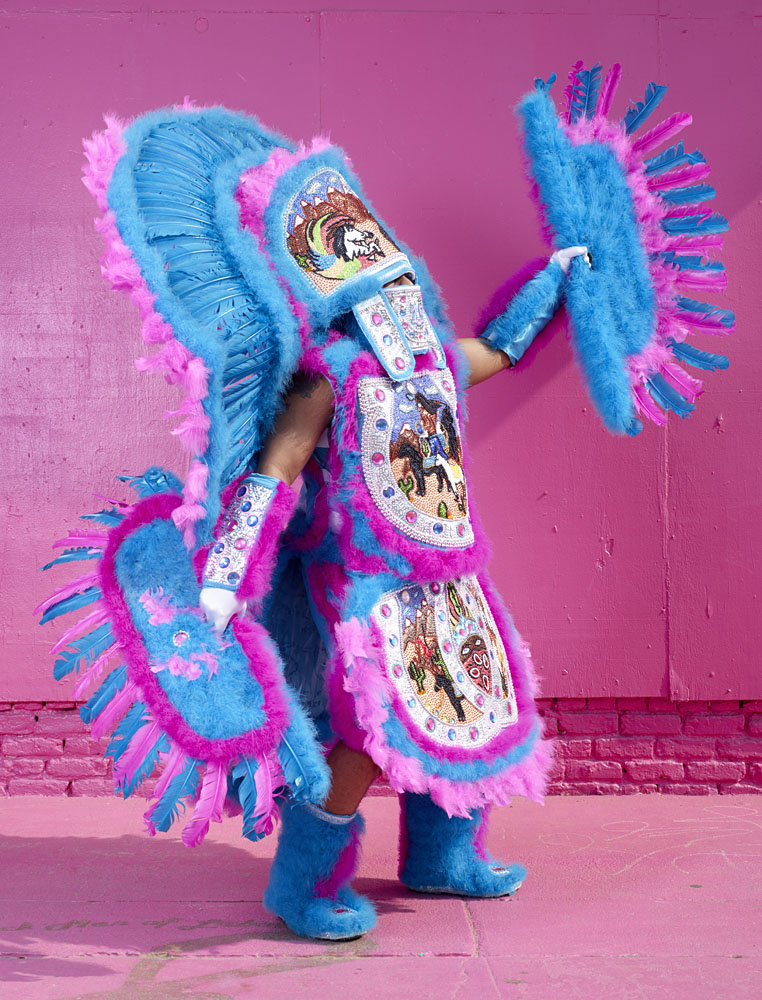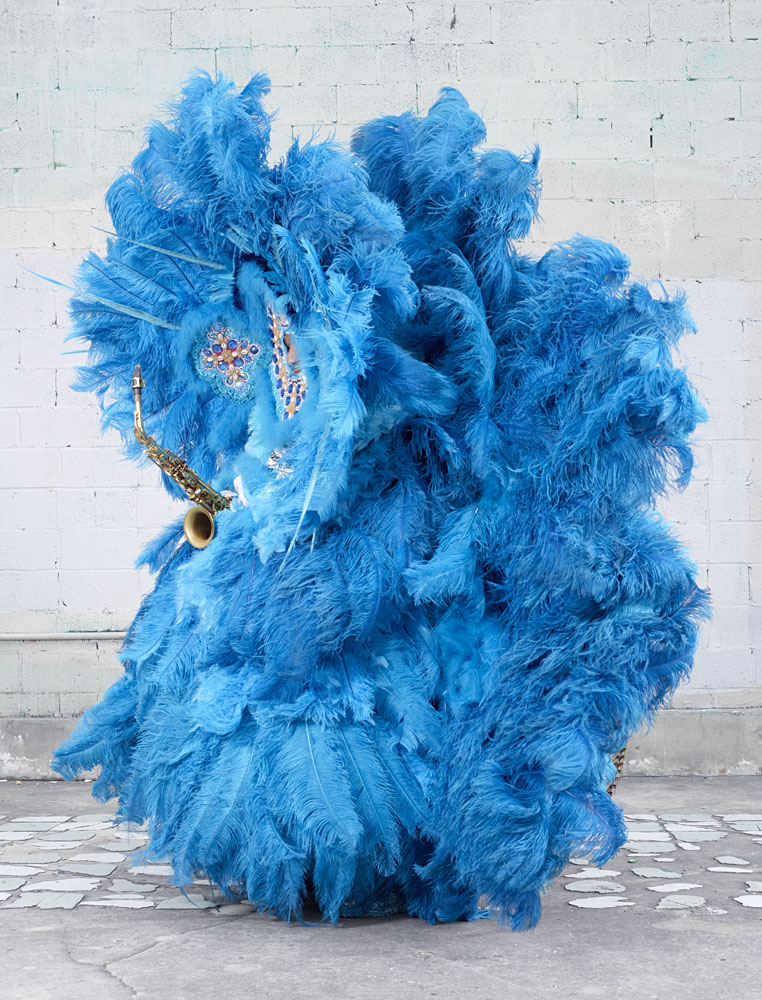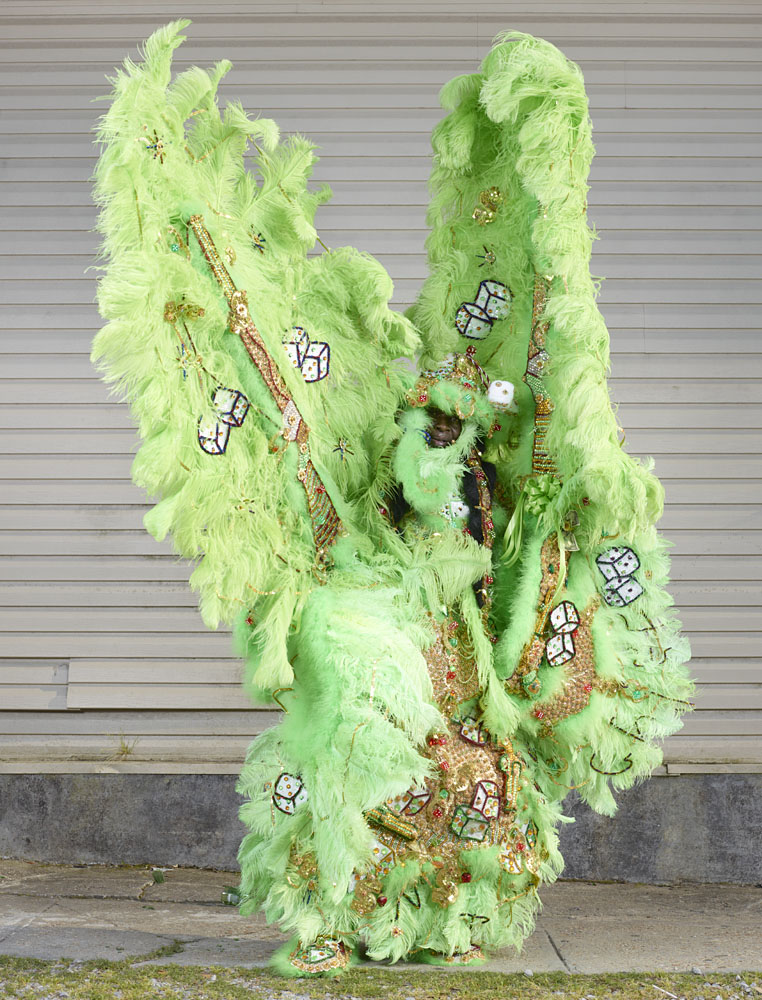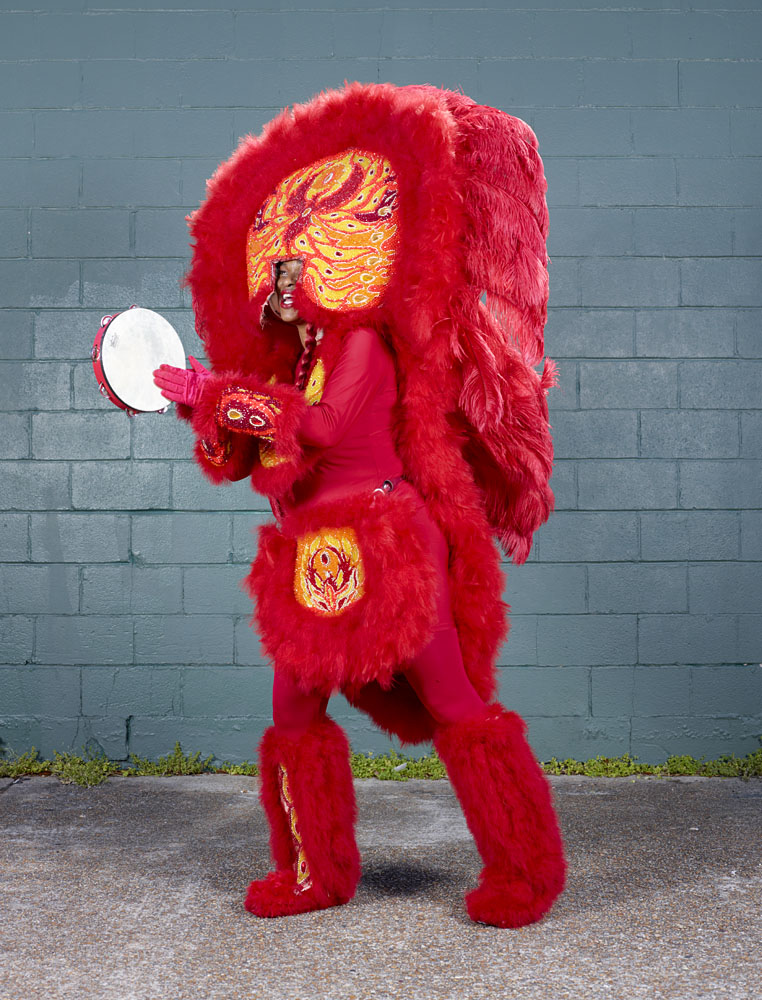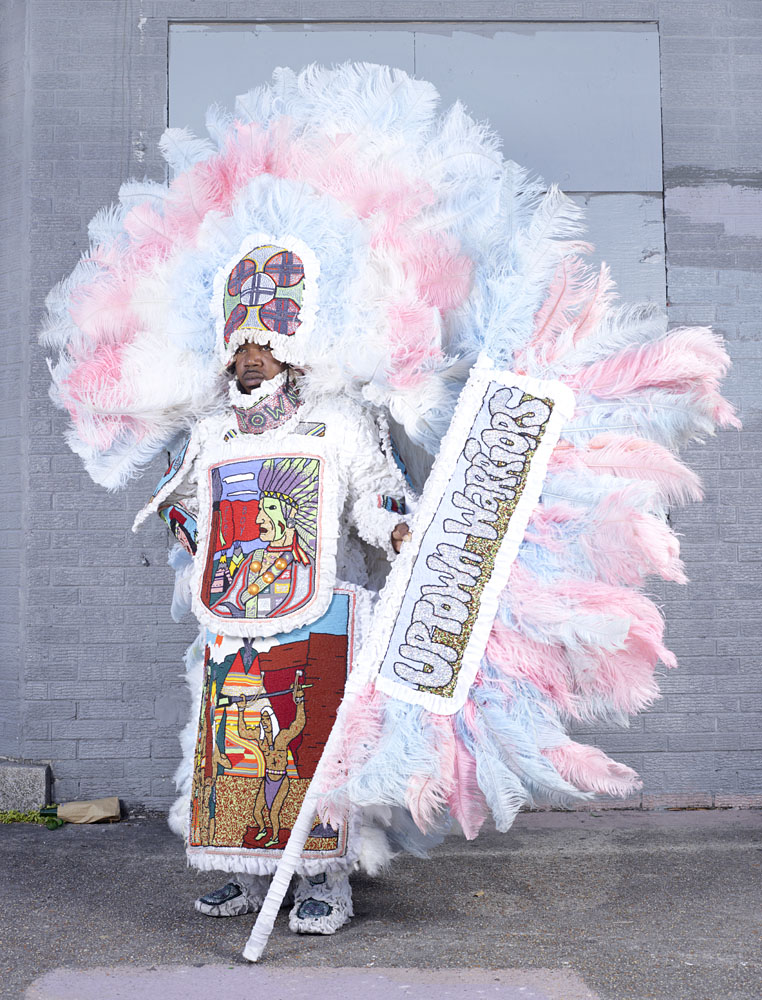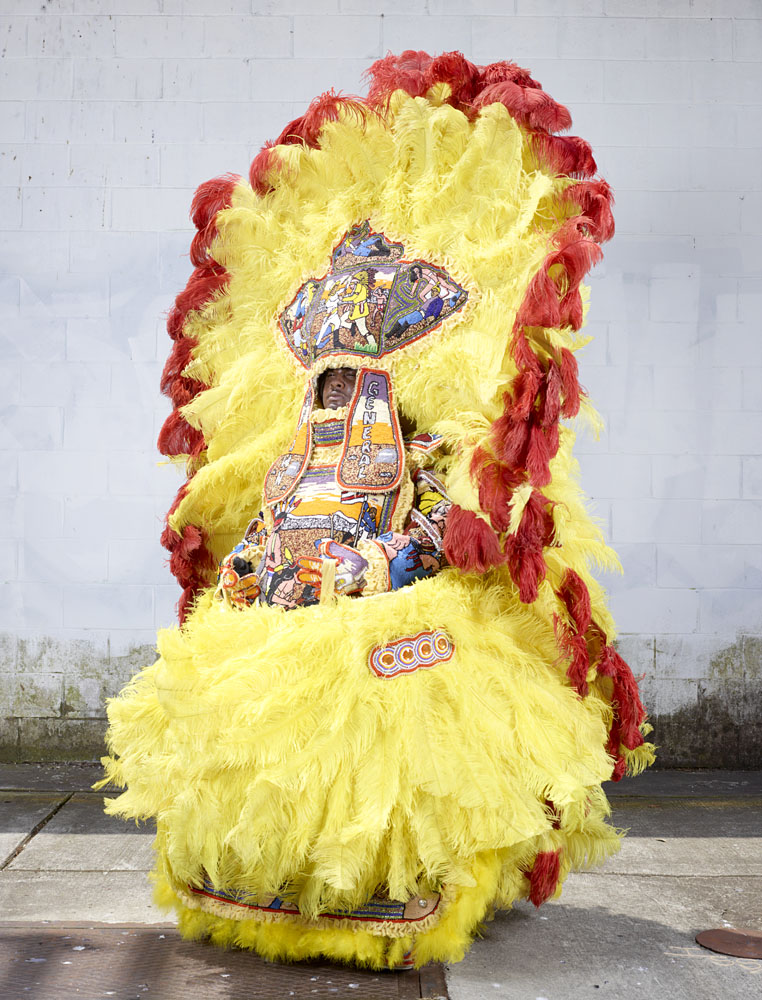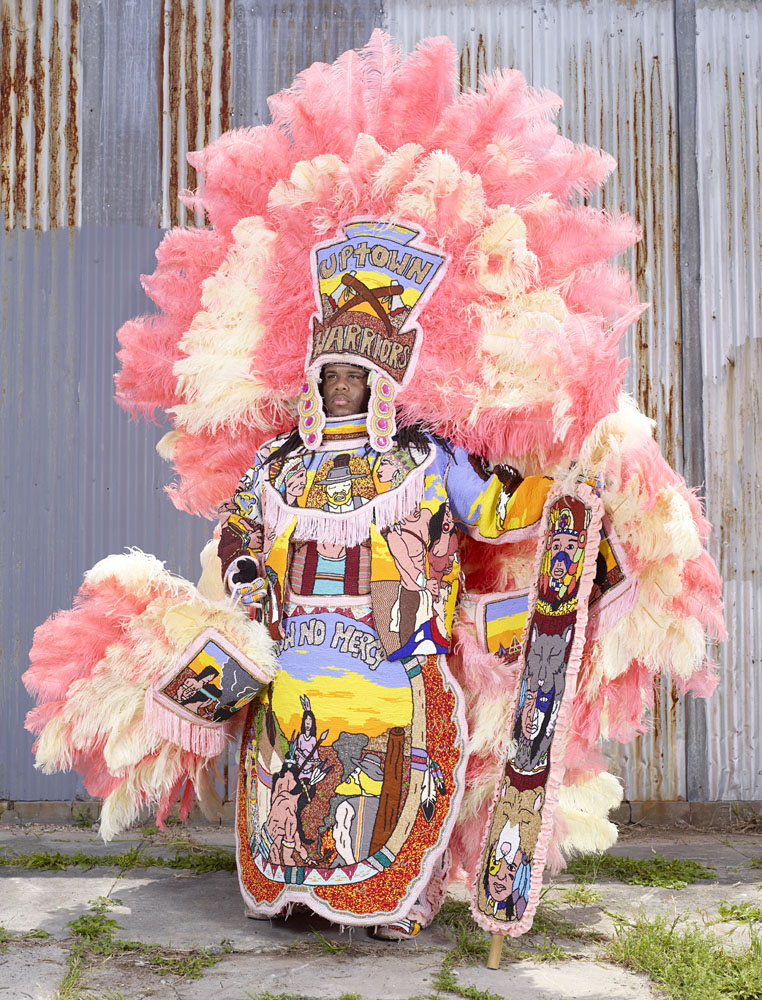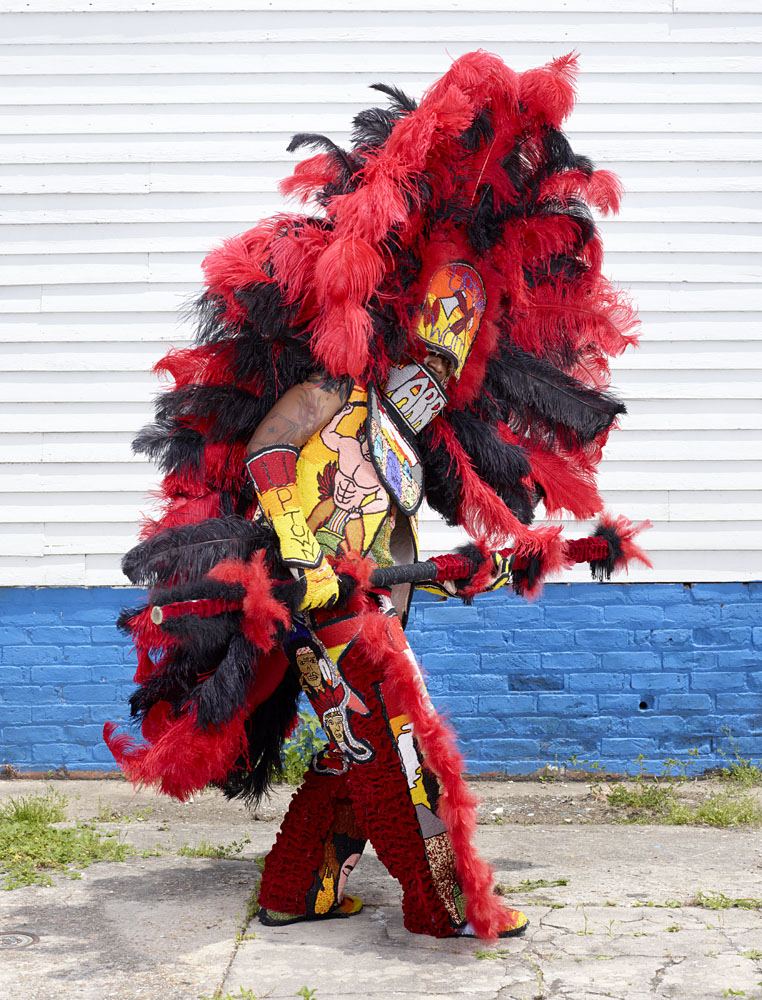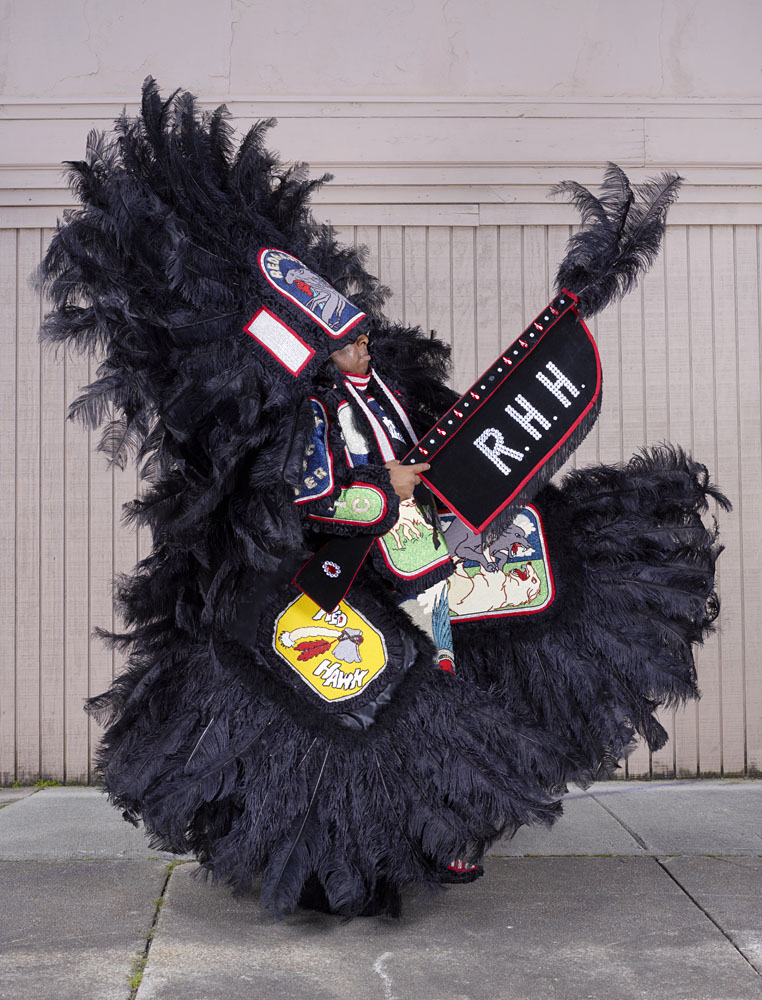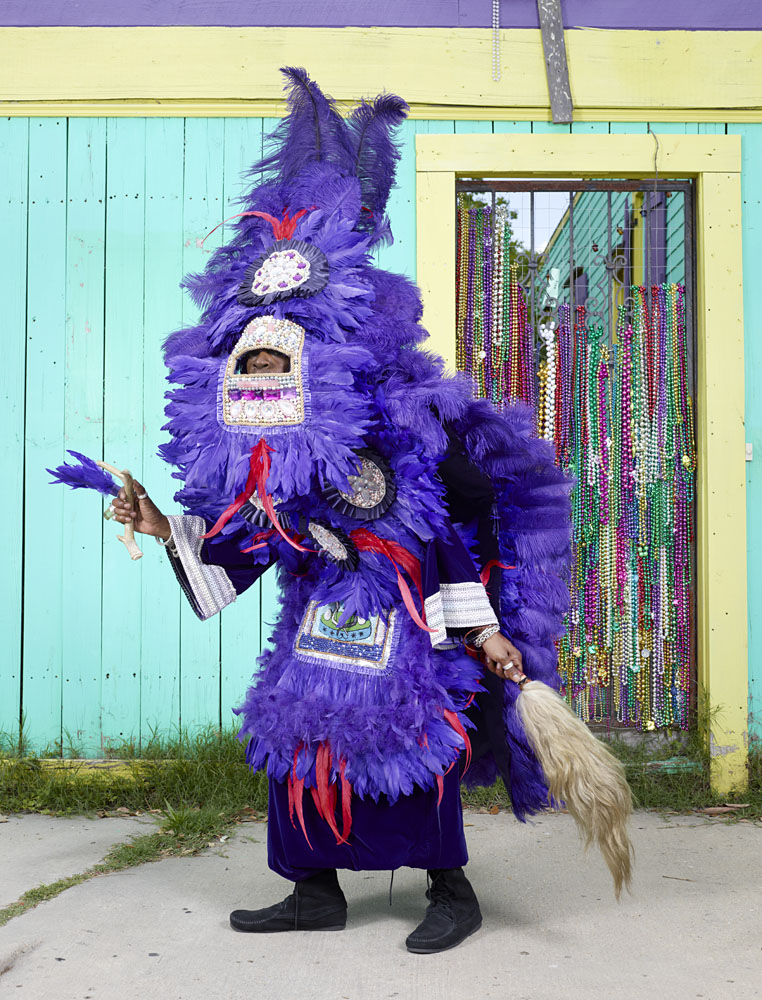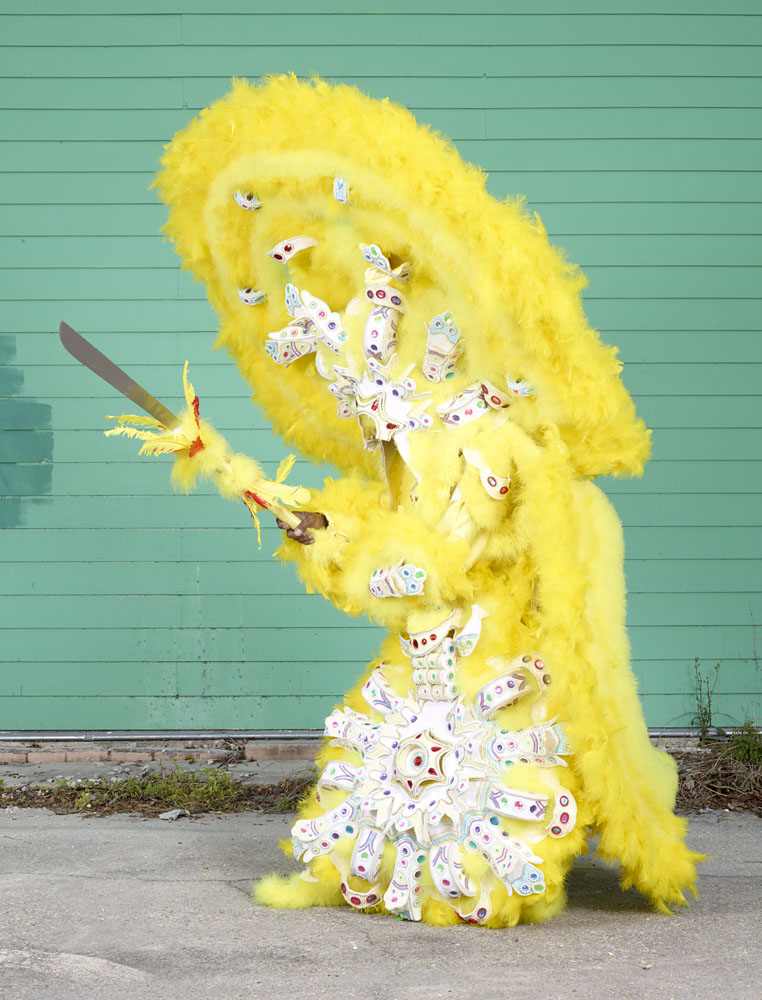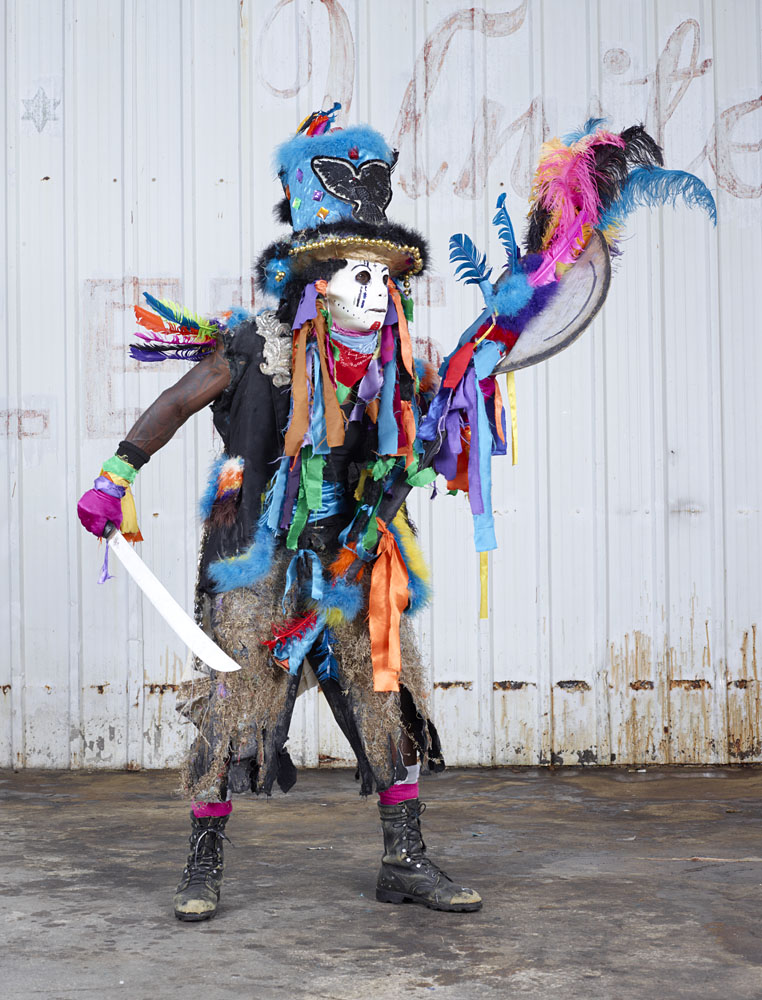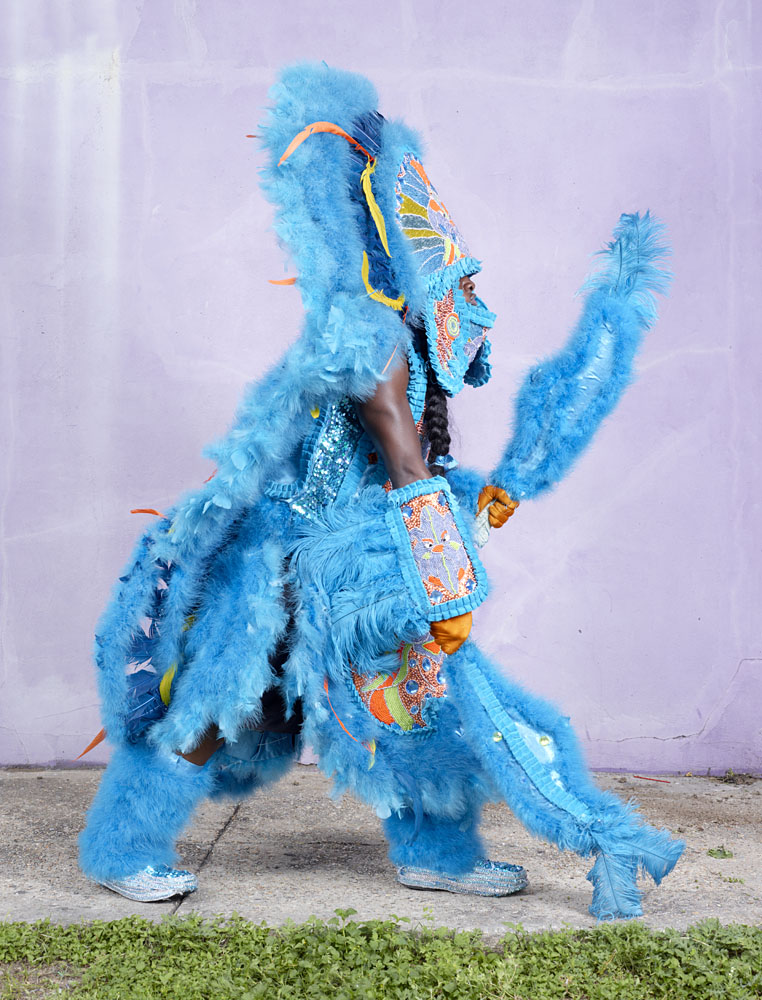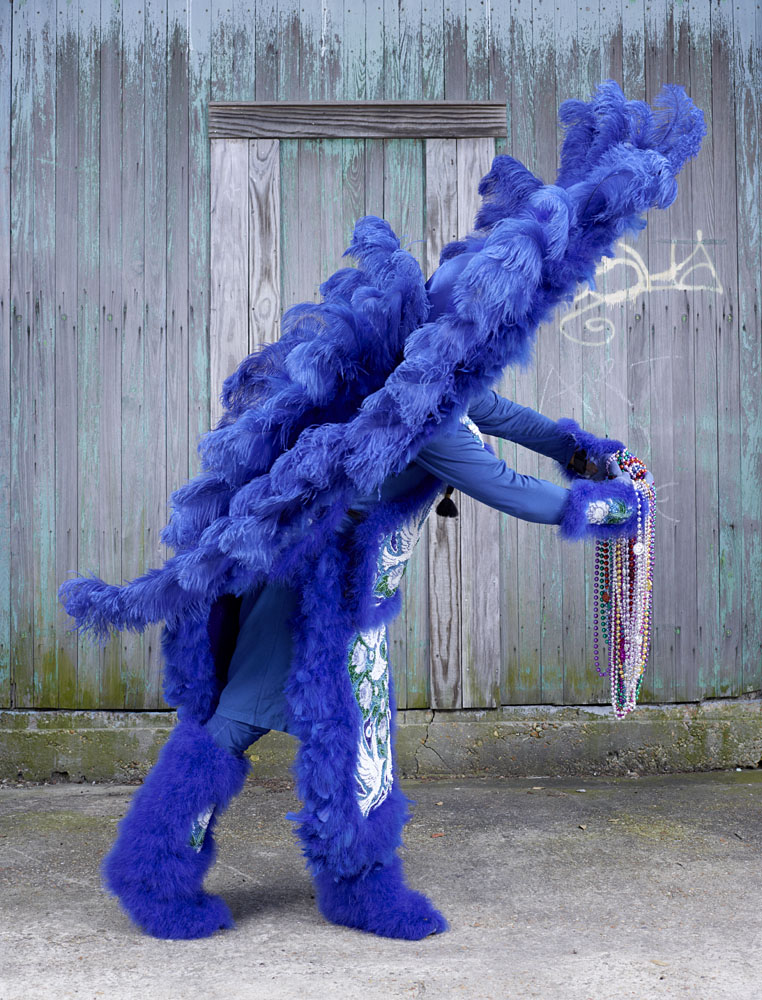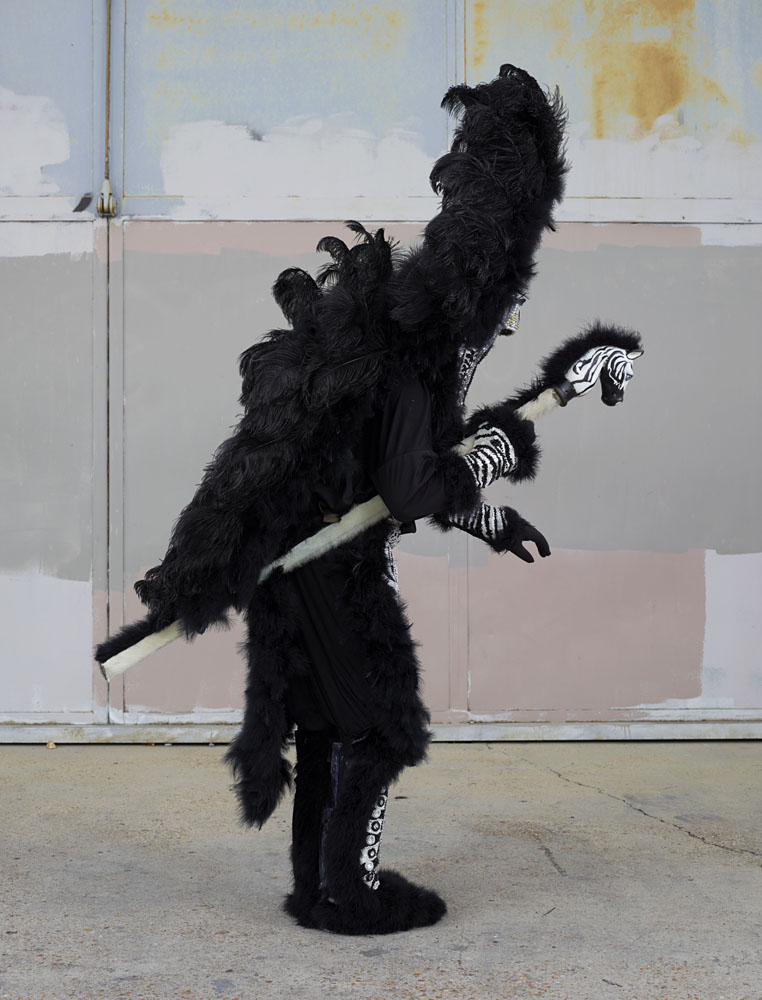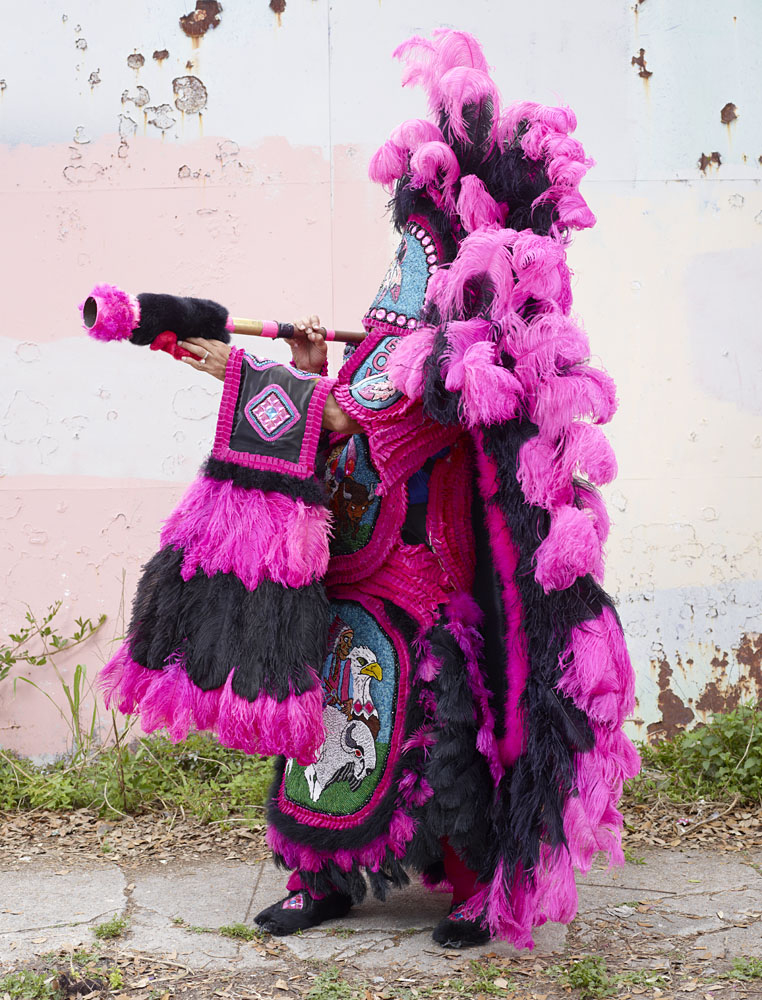Photographed full-length, in front of these colorful New Orleans walls, they proudly display theirproudly display their voluminous antlers. Big chiefs, Spy boys, Flag boys and Queens, they are the Mardi Gras Indians. Their tradition has its roots in the history of slavery; “Mardi Gras” because it takes place during the city’s carnival, and “Indians” because these exuberant silhouettes are meant to evoke, in a form of homage, the Indian tribes that took who took in runaway slaves. The Mardi Gras Indians are organized in tribes, each with its own Big Chief and Queen.
In these neighborhoods where he chooses to photograph them – severely damaged after Hurricane Katrina – he returns to “closed” environments, no landscape offering a line of flight but walls and but brightly colored walls and fences, standing straight up. If these elements of wood and cinderblock evoke an urban environment, they are above all large flat areas with which the photographer can compose, looking for the echo with the feathers and the colored beads. Occasionally, he introduces writings, advertisements or graffiti, which also come to answer to the signs given by the costumes and the stories
told by these beaded breastplates. The ritual dress is talkative, almost didactic, fixing in the form of playlets, the memory of the ancestors. Each costume is thus attached to the person who wears it, who renews it every year. However, there again, the monumental dimensions of the costume often obliterate the features of the face.
Almost always in three-quarter view, caught in a movement, the Mardi Gras Indians are tightly framed, and the and the image seems just big enough to contain all the opulence and scale of these figures.
